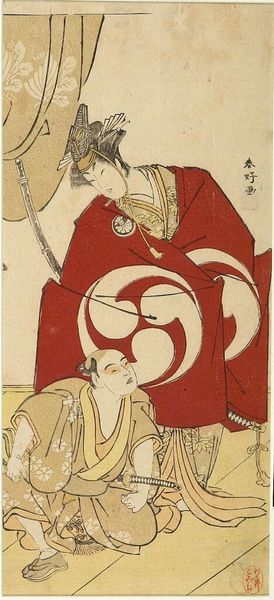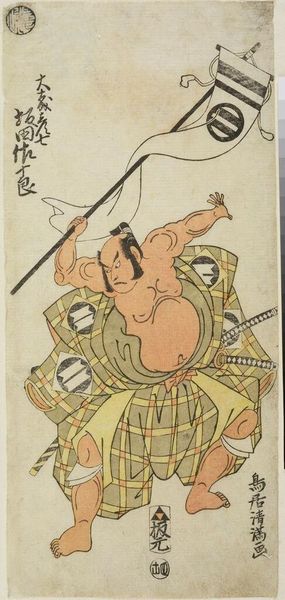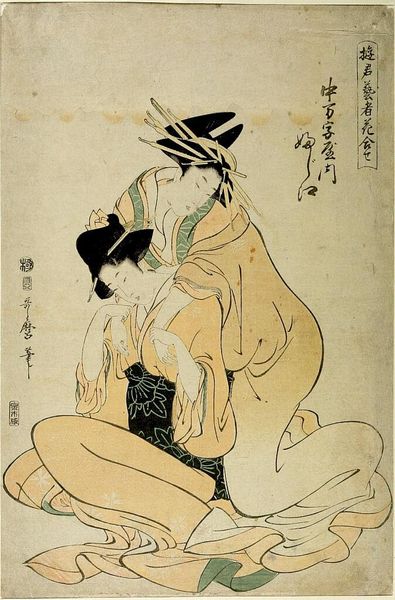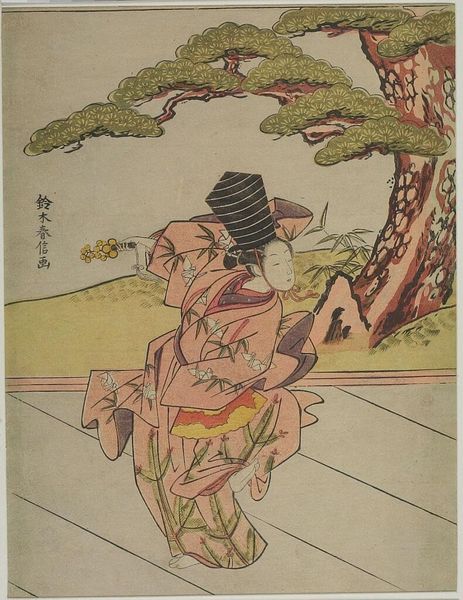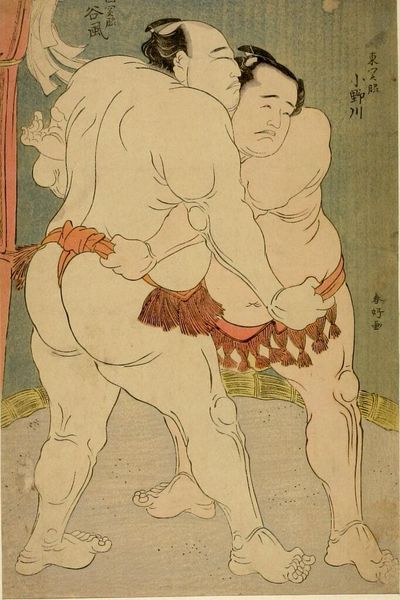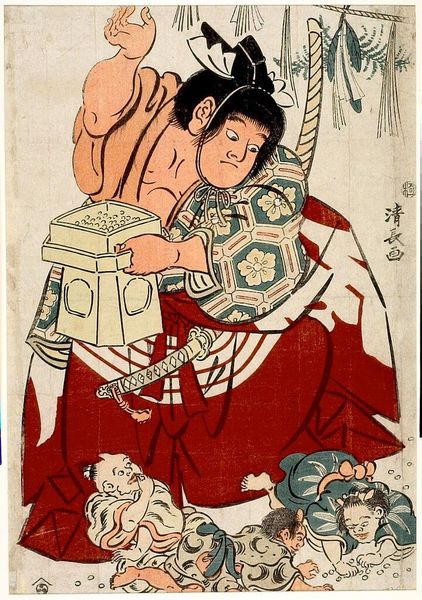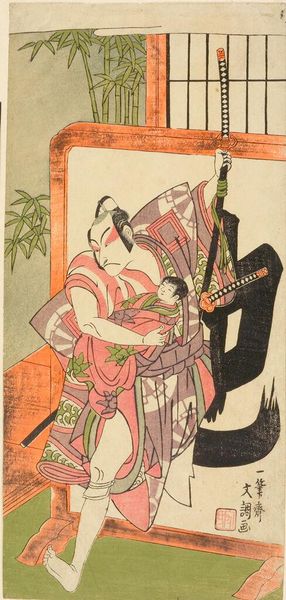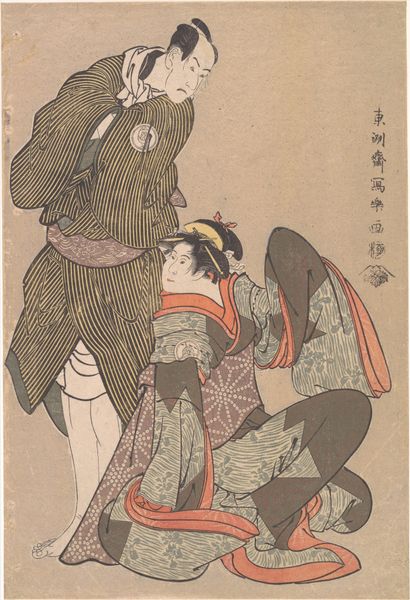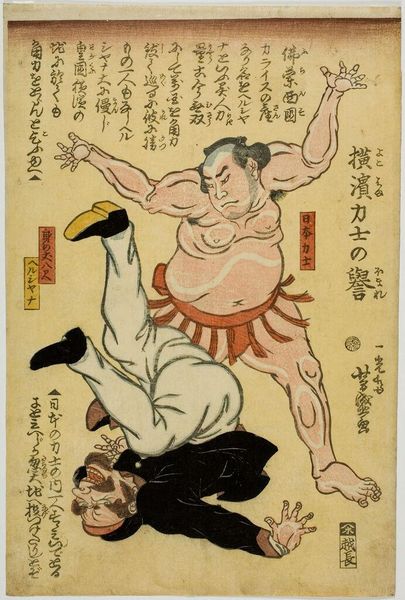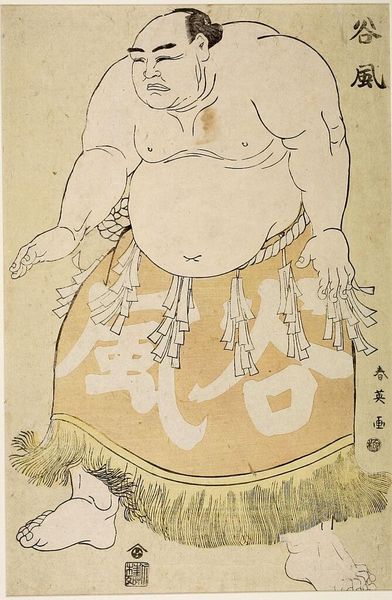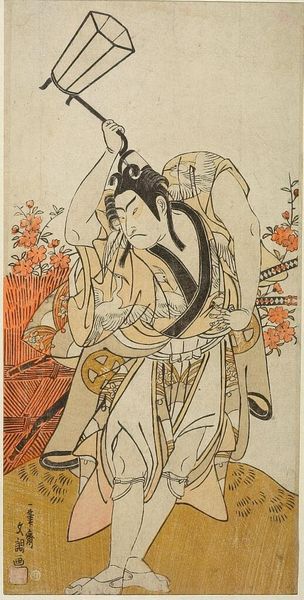
Actors Åtani Hiroji and BandÅ Sanpachi as Wresters Edo period,
0:00
0:00
Dimensions: Paper: H. 28.3 cm x W. 13.8 cm (11 1/8 x 5 7/16 in.)
Copyright: CC0 1.0
Curator: What a dynamic image! The tension between the figures is palpable. Editor: Indeed. This striking woodblock print, attributed to Ippitsusai Bunchō, depicts the actors Ōtani Hiroji and Bandō Sanpachi as wrestlers. It's part of the Harvard Art Museums collection. Curator: The exaggerated musculature and contorted expressions, though, are quite interesting, aren't they? Almost theatrical in their intensity. It suggests a deeper narrative or commentary. Editor: Absolutely. Kabuki theater often blurred the lines between performance and reality. Representing actors as wrestlers taps into a popular form of entertainment while also making a statement about social roles. The sumo wrestler image, by definition, is a statement about strength, endurance, and discipline. Curator: The symbolism inherent in depicting actors—individuals who embody personas—as wrestlers, figures of raw power, adds layers of meaning. We might consider it a comment on the nature of identity itself. Editor: Precisely. Images like this offer a glimpse into the public sphere and the very public lives of Kabuki actors of the era. Curator: It's fascinating how visual culture can reveal these complex relationships. Editor: Indeed, a potent reminder of the power dynamics inherent in performance and representation.
Comments
No comments
Be the first to comment and join the conversation on the ultimate creative platform.

